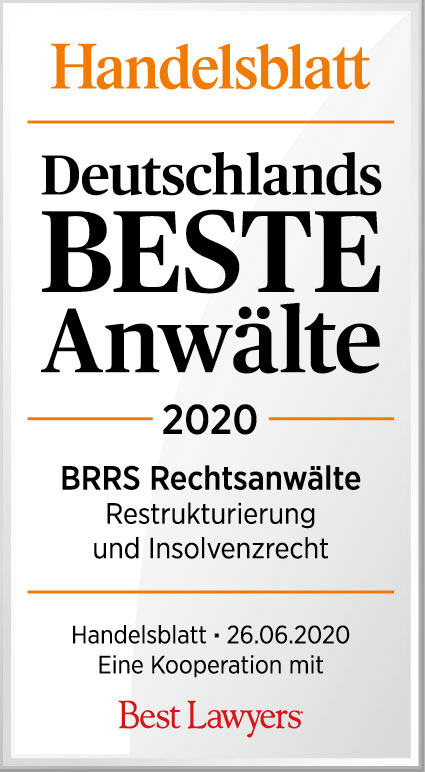Ribnitz-Damgarten, 17 May 2024: According to the online portal Statista, there were 3.8 million self-employed people in Germany in 2023.
They are categorised as “SMEs” (micro, small and medium-sized enterprises). According to the Federal Statistical Office’s destatista online portal, SMEs are categorised according to the following criteria: Micro enterprises have up to 9 employees and generate an annual turnover of up to 2 million euros; small enterprises employ up to 49 people and generate up to 10 million euros in turnover; medium-sized enterprises employ up to 249 people and generate an annual turnover of up to 50 million euros. This categorisation follows a recommendation (2003/361/EC) of the European Commission according to turnover and employee size classes.
Micro, small and medium-sized enterprises are the most widespread type and size of company in Germany. Accordingly, they also account for a relevant number of insolvencies per year.
The most frequently asked questions from the self-employed
Every insolvency brings with it many questions, especially at the beginning. BRRS partner and insolvency administrator Nils Eggers answers the most common questions he is usually asked by self-employed people in insolvency proceedings at the Ribnitz-Damgarten office:
Question 1:
Can I continue my self-employment in insolvency?
Nils Eggers:
Yes, because the freedom to exercise a profession, which is protected by constitutional law, is not cancelled by insolvency proceedings. Labour as such is not an insolvency asset, but a highly personal asset. In insolvency proceedings, self-employment is categorised as a standard insolvency. The same rules apply as for corporate insolvencies. For example, if someone is the managing partner of a company that becomes insolvent, they can become self-employed during the ongoing proceedings and generate a new income as a result.
Question 2:
How much am I allowed to earn as a self-employed person during insolvency?
Nils Eggers:
The answer is simple: as much as possible. The decisive factor is how much of the earnings you are allowed to keep. The insolvency administrator in the opened insolvency proceedings is obliged to decide whether the self-employed activity is released from the insolvency estate or not. This is determined by whether profits can be directly drawn from this activity for the insolvency estate. It is therefore a prognostic decision to release such an activity from the insolvency estate or not.
The risk for the insolvency administrator of being able to generate profits from such an activity in favour of the insolvency estate lies in the fact that the current liabilities are also included in the insolvency estate. It must then be possible to place a very high level of trust in the debtor that the figures presented also correspond to reality. Often the accounting is incomplete or not organised. If the activity is authorised, the Insolvency Code provides for a complex regulation: The self-employed person is treated as if they had entered into an appropriate employment relationship. An assessment is made as to which dependent employment relationship the person affected by the insolvency proceedings could have had on the basis of training, previous employment, etc., and on this basis it is determined whether anything is to be paid. This happens frequently in my practice.
Question 3:
Which items are exempt from seizure and which are part of the insolvency estate in the insolvency proceedings of the self-employed person?
Nils Eggers:
Self-employed people who go into insolvency often work alone and run a small business. They have computers, printers, office furniture, shop fittings or tools. The items needed to continue their self-employment through personal services are not included in the insolvency estate. For example, in the case of a courier service, the vehicle used to carry out the courier services cannot be seized. In all other respects, however, it remains the case that assets existing at the time of the opening of insolvency proceedings, e.g. claims against third parties, are part of the insolvency estate. The distinction in practice is sometimes difficult and not always easy to convey to debtors.
Insolvency in self-employment is part of the insolvency administrator’s day-to-day business. Further answers to typical questions in insolvency proceedings, also from the perspective of employees, creditors or employers, can be found on the page of our BRRS Insolvency Wiki: https://www.brrs-rechtsanwaelte.de/de/insolvenz-wiki/

